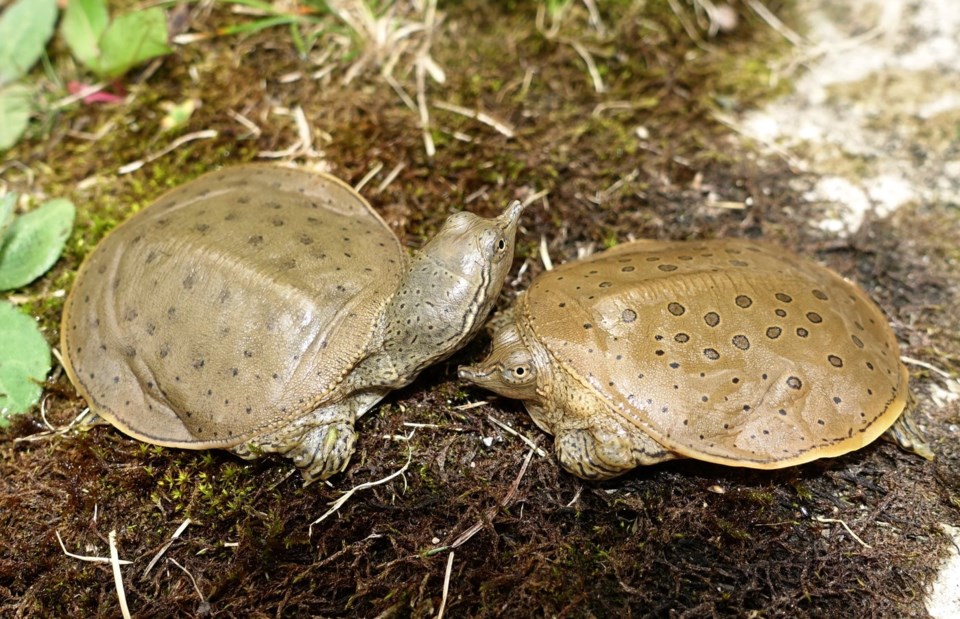The most Canadian animal? It's not the beaver that marks the nickel, the moose that pervades souvenir shops across the country, the loon that gave the one-dollar coin its nickname, or even the much-maligned Canada goose.
In fact, the spiny softshell turtle is Canada's most distinct animal in evolutionary terms, researchers from Simon Fraser University show in a first-of-its-kind study.
Arne Mooers, a biodiversity professor who led the research, says it means the threatened freshwater turtle found in southern Ontario and Quebec has spent the longest stretch of time evolving independently from other species in Canada.
The researchers started by building a "tree of life" using Canada's official list of species, which includes 222 mammals, 674 birds, 48 amphibians and 49 reptiles.
They identified the top 20 most isolated species for each group and found the spiny softshell turtle topped the rankings, representing nearly 180 million years of independent evolutionary history, while Canada's lone marsupial, the Virginia opossum, was the top-ranked mammal at nearly 160 million years.
The softshell turtle is followed by the mudpuppy, the only completely aquatic amphibian in Canada, and a species that Mooers describes as "really cute."
"It can grow as long as a small cat, and it can live for 30 years," he says.
The ranking not only highlights species that are often "weird and wonderful," like the mudpuppy, he says, but also offers a kind of "triage" tool for conservation efforts.
A species that has close relatives in other countries may be isolated and threatened in Canada, and a high ranking for evolutionary distinctiveness could help conservationists determine which species to focus on, he says.
"If we have limited resources, then this could be one way to help us decide what to do, and say, 'Well this one really is very different from everything else, and we've got a measurement of that so maybe we should make sure we don't lose this species.'"
It's one of many ways to assess species, but it is a "new way," adds Mooers, a member of the Committee on the Status of Endangered Wildlife in Canada.
He says the study published this month in the Canadian Field-Naturalist, a peer-reviewed journal, is the first to create scores for the evolutionary distinctiveness of species in a particular country, going deeper than the species' global ranking.
"If you do global conservation, you want the global list, but if you're interested in your country, maybe you want a country-specific list, and they might not be the same."
Overall, the researchers found most of the species with high evolutionary distinctiveness rankings in Canada were amphibians and reptiles.
The tree of life for mammals in Canada is "very weird," Mooers notes, because it includes the country's only marsupial, the Virginia opossum.
The opossum pushes the mammal family tree back to 158.8 million years, but the rest of the top-ranked mammals are more closely related to each other.
They range from about 24 million years of independent evolution for the pallid bat to close to 64 million for the North American porcupine, the study says.
This report by The Canadian Press was first published Oct. 30, 2024.
Brenna Owen, The Canadian Press




